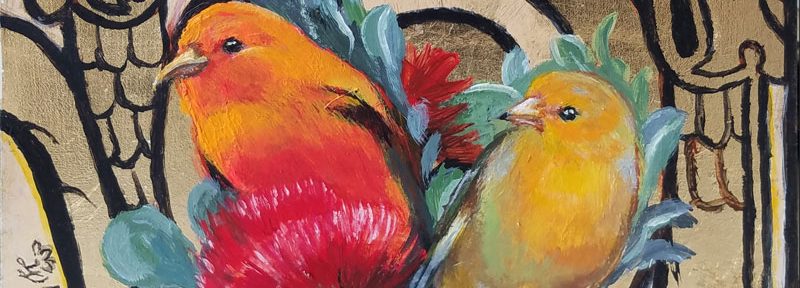Recently I returned to an ongoing series of illuminated endemic Hawaiian birds using metal leaf and inspiration from old manuscript art. Illuminated manuscripts, intricately illustrated books, were very painstaking work hundreds of years ago. With no automation, you can imagine now expensive and difficult it would be to procure pigments and metal leaf. Even the parchments and the glues that supported the work was something that must be made by hand with hours of time. This type of decoration was reserved for only the most important books.
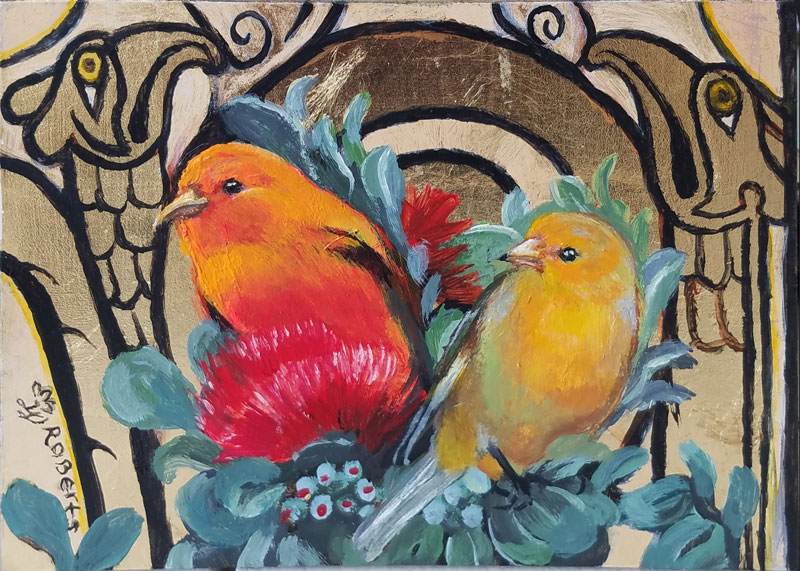
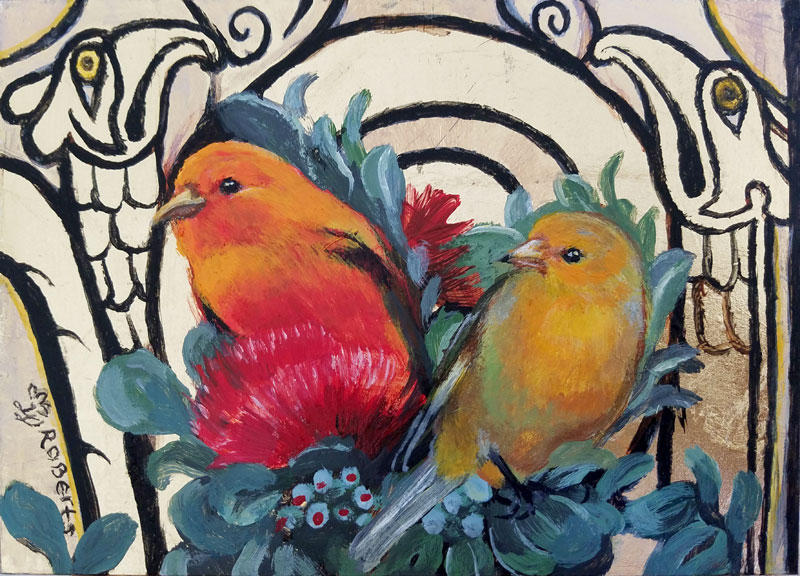
I am using elements of old illumination in conjunction with these small birds as a signal that these native birds, such as the tiny ‘Akepa, are treasures. They are worth celebrating and depicting with care and time, and I hope to make them familiar to you so that if you ever see one, you will know what an amazing gift it was to see one in person. I chose celtic birds as part of the old manuscript motif in the ‘akepa painting, because I love the idea of showing birds in ancient pattern and in modern representational painting style in the same piece. Adorably enough, these two ‘akepa are painted exactly life size, and both the male and female bird fit on a tiny 5 by 7 inch canvas! The birds are only 4 inches long (10 cm)! The Maui ‘akepa may already be extinct, and the tiny Hawai’i ‘akepa birds need to be protected so that they will not disappear as well. I would love to inspire support for conservation of their rare habitat in the upper elevations of Hawai’i island. Wild ohia forests are rare and beautiful and well- worth protecting. The vivid ‘akepa are a spectacular part of our native upper elevation forest, and as a bonus, the males are said to possess the most orange plumage of any bird type in the world.
Below is another illuminated Hawaiian bird, the i’iwi. They can be seen shyly flitting through the treetops at Volcano National Park. You can hear their metallic calls better than you can see their vibrant red-orange feathers and black wings because they are constantly on the move. Those beautiful salmon-pink curved beaks are the result of co-evolution with lots of curved flowers, including lobelia. Here I have placed the i’iwi with mamane, a yellow pea-like flower cluster on a small lacy-leaved tree. I painted this bird with egg tempera, the traditional medium of long-ago Europe. I usually prefer oil paints, but I wanted to work with tempera this time to create the gem-like glow of the red feathers in translucent tempera layers.
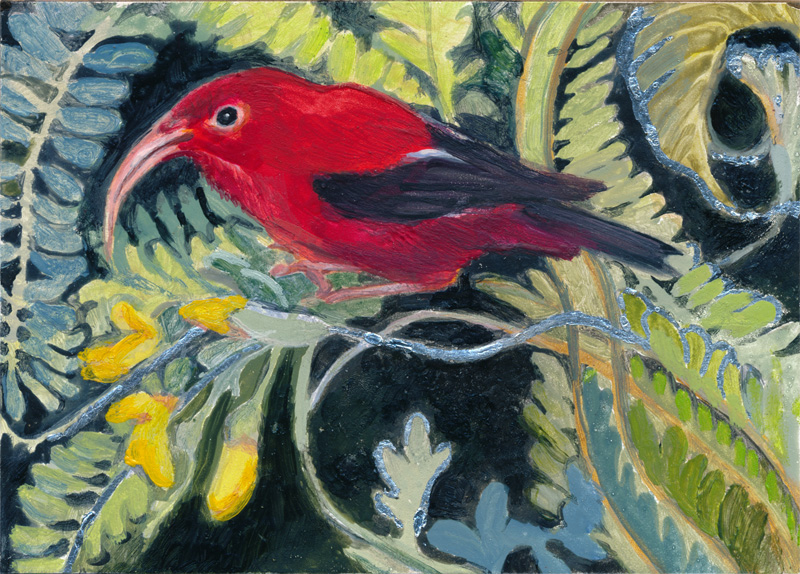
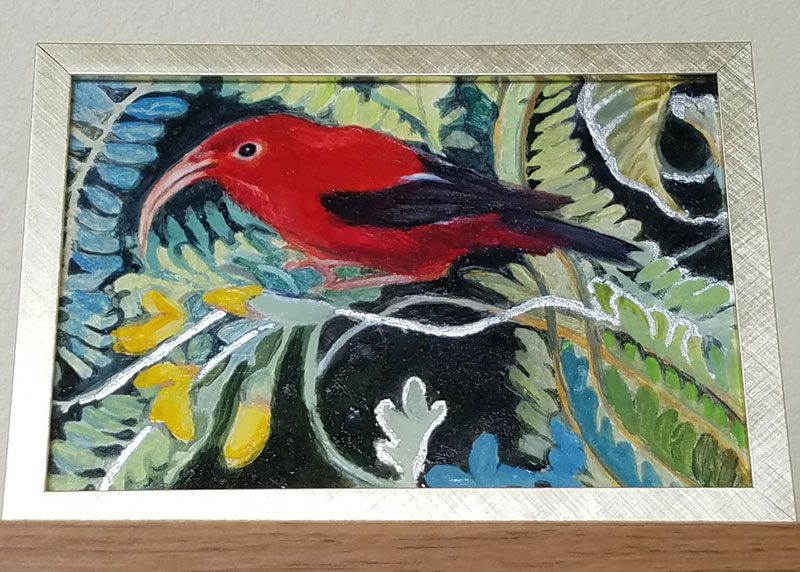
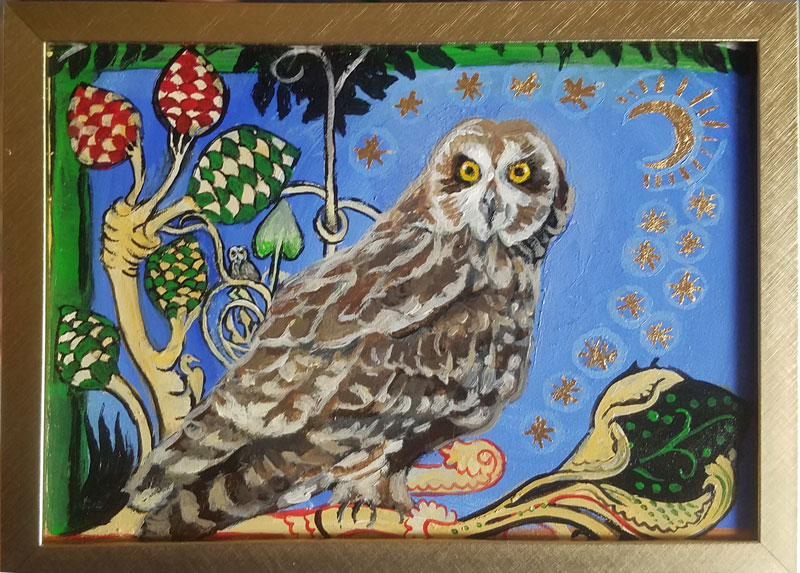
The other two illuminated birds were painted a few years back, Above is “Illuminated Pueo”, the Hawaiian owl. A rare sight indeed, I have twice been graced with sightings of these incredible birds. They are magical to see in person. I found the most adorable small owl manuscript, and I spent time with a size 00000 brush to add this and many other minuscule details to my piece. I also really enjoyed the whimsy of the asterisk-like stars and the Dr. Seuss-like tree designs that I borrowed from other manuscripts.
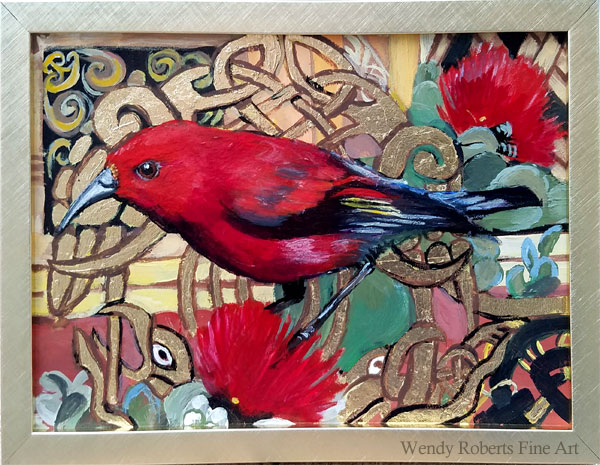
Lastly, “Illuminated Apapane” was my first illuminated Hawaiian bird. With their brilliant red feathers, they are one of the most commonly seen native birds on Hawaii Island, and such a dazzling sight with the classic lipstick-red of their feathers matching the red of ohia blossoms. I love seeing and hearing them at Volcanoes National Park!
Hopefully someday you will see all of these birds in person and be able to appreciate how rare and beautiful they are.
